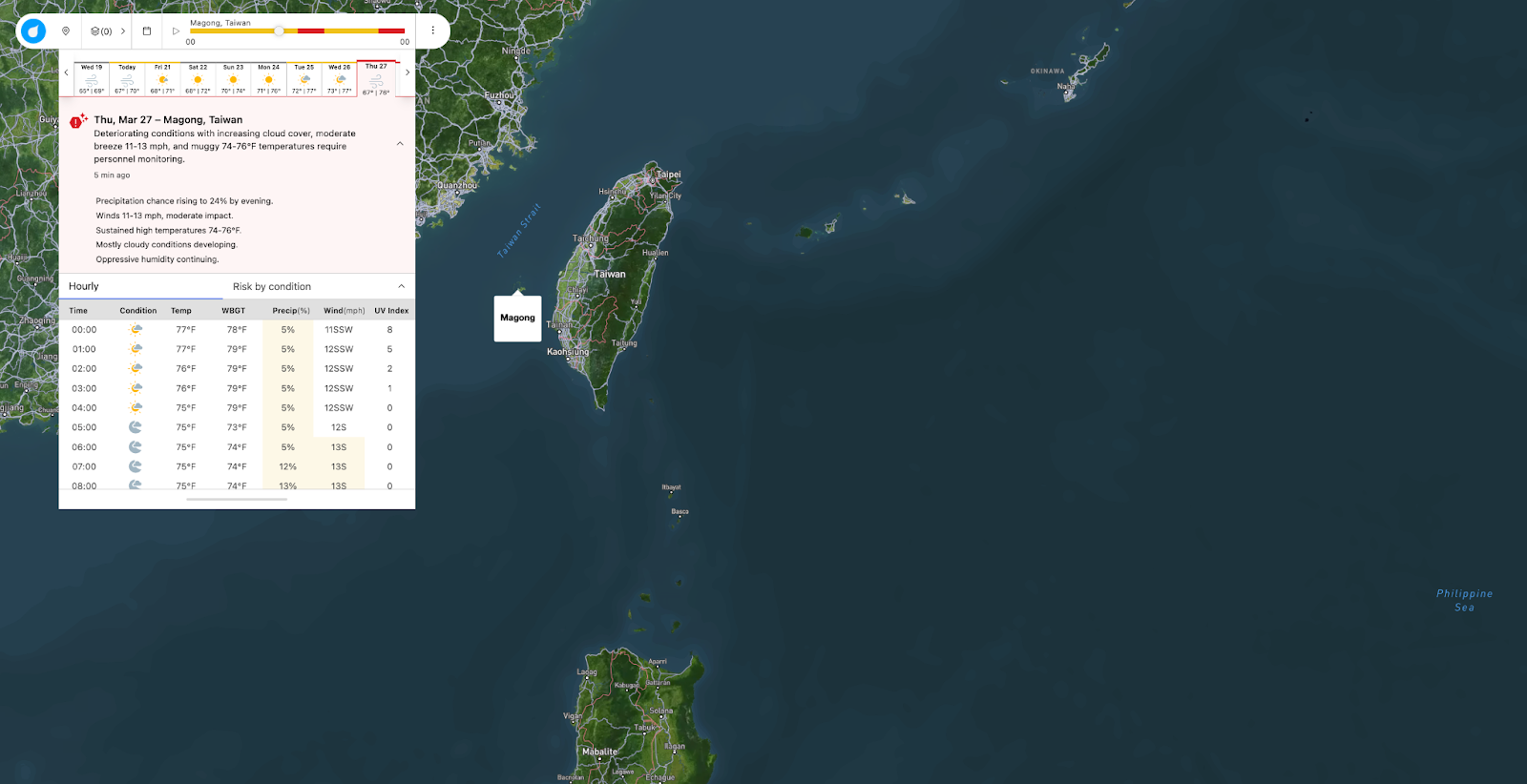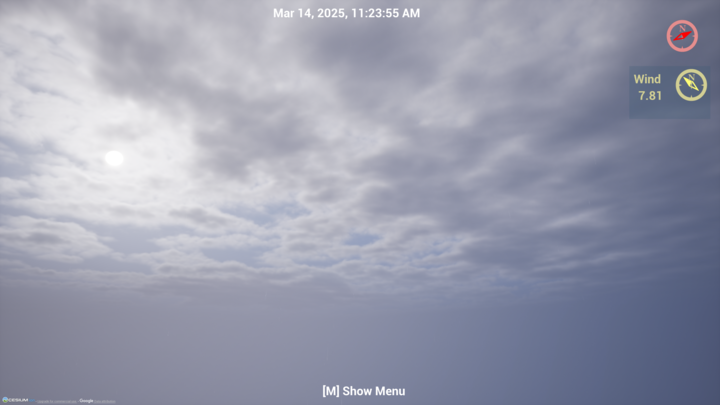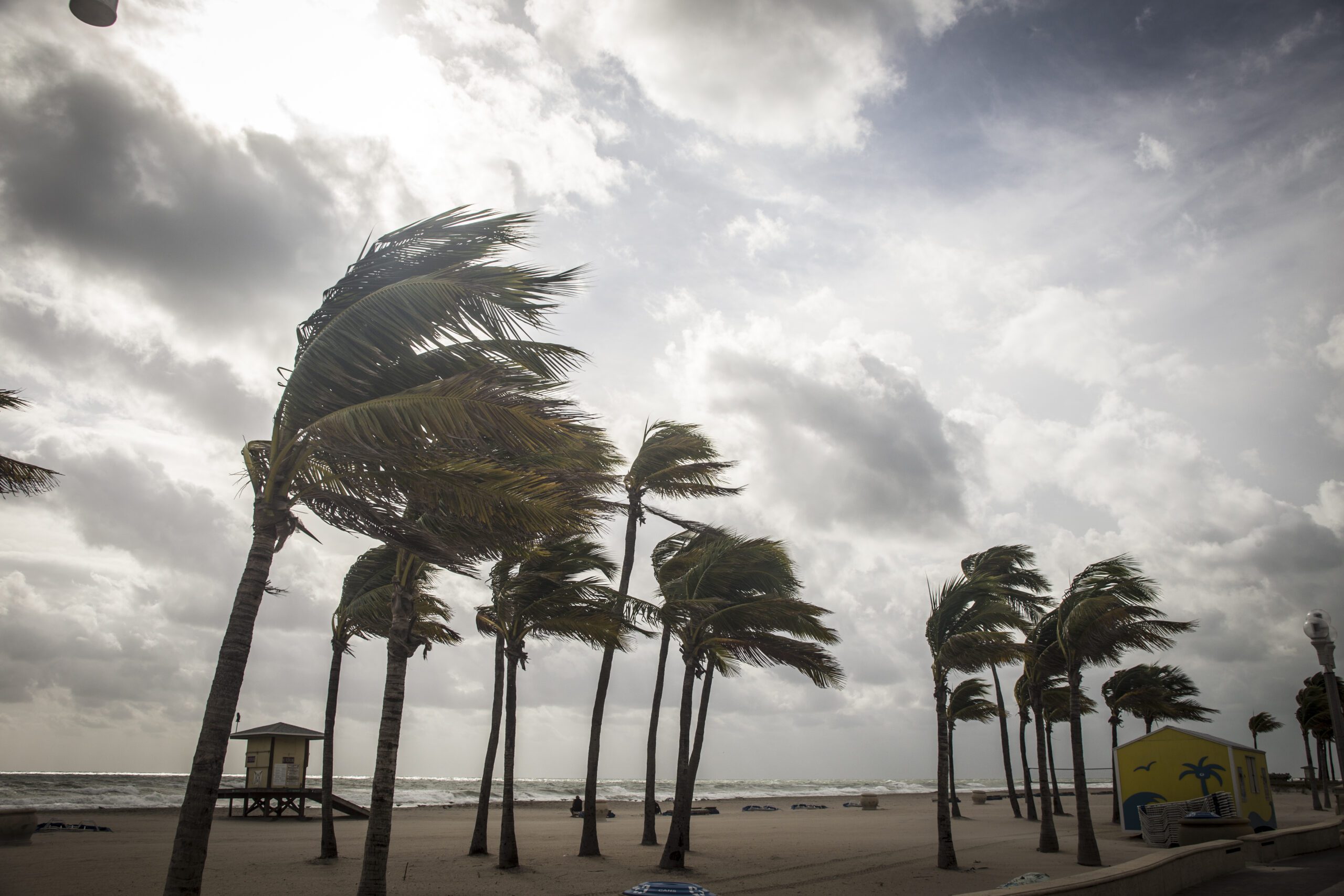Weather intelligence for the future: Crafting a strategic enterprise approach to changing environmental conditions
Continue reading- Weather plays an active role in every phase of mission planning, influencing outcomes more directly than ever.
- Weatherverse™ Sim delivers high-fidelity weather environments for training and simulation platforms, enabling mission rehearsal under realistic atmospheric conditions that reflect actual terrain, forecast, and timing.
- Weatherverse™ Planner translates complex weather data into clear operational impacts, helping mission planners identify risks, align assets to optimal weather windows, and reduce uncertainty during execution.
Military operations succeed when every variable is known. Few are as influential – or as overlooked – as weather. While existing weather reporting capabilities remain a vital resource, many decision makers don’t realize how much more is available.
Forecasting alone doesn’t meet today’s operational needs
A basic forecast shows surface conditions. But what about mission timing, airborne visibility, and shifts that occur within hours, not days? Today’s defense environments demand more than general data. They call for precise, responsive, accurate, and impact-aware systems that adapt as fast as conditions change.
Standard weather tools were built for stability. They offer a broad picture – temperature, precipitation, wind speeds – but they often miss mission-critical details. Tactical teams operating in varied terrain or fast-moving scenarios can’t afford to act on partial information. Gaps in awareness can delay operations, increase risk, or even force mission aborts.
Siloed systems and poor integration slow decision making
Another challenge is integration. Many military weather platforms don’t sync with simulation tools or real-time planning systems. That makes it harder for leaders to adjust as conditions evolve. And since data is scattered across branches, teams are left piecing together their own forecasts.
Many existing military weather reports can’t convey a unified weather picture given the complexity, leaving the end user responsible for interpreting the “so what.” Further, some have heavy bandwidth requirements, limiting access in austere or contested environments. Others fail to present probabilistic ranges – leaving planners in the dark about less likely, but potentially mission-threatening, scenarios. Without tools that provide accurate, timely, and localized forecasts, the odds of weather undermining an operation increase sharply.
Strategic inaction has left a capability gap
The Department of Defense faces structural issues that make this worse. After decades of operating in environments where air superiority was the norm, weather was often seen as a background factor – not a strategic one. That led to the slow adoption of more advanced forecasting systems. Weather data also remains siloed across units, with no unified strategy to guide how it’s shared or applied. And while some specialized teams have begun to innovate, most lack access to a common platform that delivers real-time weather intelligence across all mission levels.
New solutions turn weather into an asset, not a challenge
Unlike other platforms that operate in closed GIS environments or as standalone field apps, Weatherverse Planner is built for synthesis and integration. As one of the most advanced weather intelligence systems available, its plugin architecture works seamlessly with the planning and simulation platforms already used by defense teams – eliminating data silos and reducing tool switching.
While some competitors rely on synthetic data or only pull from limited METAR stations, Weatherverse Planner supports over two million global points, offering significantly broader coverage and real-time relevance. Further, these capabilities can be extended to field teams who can also benefit from mobile-ready capabilities that work even in bandwidth-limited environments.
Built to meet real operational demands
An effective military weather platform needs more than accuracy. It must be global, mobile, and adaptable. Planners should be able to access real-time, localized data – whether they’re in urban environments, mountain passes, or open oceans. Forecasts should account for unit-specific needs, from air wings to armored columns. And systems should support “what-if” planning to explore how different weather conditions could impact mission success. Weatherverse Planner delivers on all these fronts, helping transform raw weather data into operational clarity.
Weather windows provide a tactical edge
One of the more valuable purpose-built capabilities of Weatherverse Planner is “weather windows” – specific timeframes where forecasted conditions meet mission requirements based on the assets being deployed. Variables like cloud cover, wind shear, and visibility can be analyzed in real time against asset attributes to isolate the best operational timing to deploy a mission for optimal success as influenced by weather. In fact, with these capabilities, weather can be seen as not only something that could degrade effectiveness but in some cases can be understood and utilized as an offensive component of a mission or operational plan. Users can act confidently, knowing they’ve aligned every element of the mission to favorable weather.
Condition Manager turns insight into action
Powering much of these differentiated capabilities in Weatherverse Planner is Condition Manager, a proven tool first built and deployed for aviation customers. It tracks how incoming conditions will affect operational assets (tank, dismounted soldiers, drones, aircraft, etc.). Alerts are automated and customizable, so teams receive early warnings across the entire current and forecasted weather window for when operations or objectives might be impacted. The interface is intuitive enough that users without weather expertise can manage it effectively.

Weatherverse Planner Plugin providing an initial layer of weather intelligence on a location (including a contextual AI summary) within a GIS environment.
Weatherverse Sim enhances simulation realism
For teams conducting live, virtual, and constructive simulations, Weatherverse Sim brings real-world weather into immersive training and simulation environments. It is initially designed to support next-generation platforms using the Unreal Engine rendering standard, realistic, physics-aware weather overlays that help enhance readiness and sharpen decision making. This solution delivers real weather (not synthetic) tied to real locations anywhere globally. Incorporation of Weatherverse Sim into Unreal environments significantly improves realism and simulation effectiveness as impacted by weather. Simulation operators are gaining access to world-class weather data and weather science.

Weatherverse Sim visualizing The Weather Company’s forecast weather data for use in a simulator.
Why timing matters more than ever
Modern missions often depend on tight schedules. If a window opens for a successful airlift or amphibious landing, every minute counts. Missing that window, even by a few hours, can compromise the entire strategy.
Planners who understand weather effects on military operations can adjust ahead of time. They can delay, reroute, or re-prioritize without losing momentum. They also avoid the risk of launching under poor conditions, which can put personnel and equipment in danger.
Military planning evolves with better weather data
Military operations planning now includes a broader range of variables than ever before. Weather plays an active role in every phase of mission planning, influencing outcomes more directly than ever. Advanced tools offer the clarity and speed needed to keep up.
The traditional military weather reporting still plays a role but needs support. Solutions like Weatherverse provide that support. They offer deeper insight, faster updates, and a better understanding of how weather aligns with mission success. Weatherverse is powered by The Weather Company, the world’s most accurate forecaster,1 bringing mission-grade precision to every decision point.
Better weather data leads to sharper decisions in fast-moving environments. Commanders rely on precise, location-aware forecasts to guide timing and resource use. Asset-specific alerts help planners adjust quickly, even as conditions evolve. When weather intelligence is fully integrated into mission systems, it strengthens coordination and turns environmental awareness into operational advantage.
Let's talk
To learn more about our integrated weather planning, visualization, and simulation platform for government and defense, contact our experts today.
Contact us1 ForecastWatch, Global and Regional Weather Forecast Accuracy Overview, 2017-2022, commissioned The Weather Company.
June marks the official start of hurricane season. The Weather Channel meteorologists are forecasting a less active season than last year, but U.S. landfall risk remains above average. The impacts of changing weather are nearly impossible to ignore. Consumers are feeling these shifts firsthand, with extreme weather events becoming a year-round reality, not just seasonal occurrences.
This shift is fundamentally altering how people prepare for, respond to, and think about weather-related events in their daily lives. Not only do people report seeing more unusual weather activity for their location and season, the impact is widespread. In fact, a staggering 9 out of 10 respondents have been personally impacted by extreme weather in just the past two years.1
2024 hurricane season recap
The 2024 hurricane season confirmed it: Weather patterns are changing. This past season broke numerous records with 18 named tropical storms, 11 of which became hurricanes.2 Of these, five intensified to major hurricanes making landfall in the U.S., with two reaching Category 5 strength — a phenomenon that has occurred only five times since 1950.3 As for the records in 2024: Hurricane Beryl was the earliest Category 5 on record, arriving two months before peak season. Hurricane Helene stands out historically because it affected areas of the country that don’t usually see hurricane effects, like North Carolina, Georgia, and Tennessee.4
This tells us seasonal preparedness is an always-on need, with consumers seeking trusted guidance and solutions year round. So, how do we prepare for and recover from the seemingly inevitable impact of extreme weather events that now include not just hurricanes, but also wildfires, tornados, winter storms, and flooding?
We don’t have to go it alone and — the good news for marketers — consumers don’t want to. People turn to brands, products, and services they trust the most ahead of, during, and after weather events. In fact, 94% of people expect brands to step up to help communities affected by weather events.5 This gives marketers across CPG, energy, health, insurance, and retail, an invitation to show up with empathy, authenticity, and support when it matters most.
The new normal: Extreme weather beyond hurricanes
The evidence surrounds us: Winter wildfires spread through Southern California, the Carolinas,6 and even Long Island due to unusually dry conditions and strong winds7 — cementing that fire season now extends year round. Meanwhile, 2024 saw the second-highest tornado count on record, including San Francisco receiving its first-ever tornado warning.8 And maybe most surprisingly, all 50 states experienced snowfall this winter.9 Florida recorded its heaviest snowstorm ever, with Milton delivering over nine inches — doubling the state’s previous record from 1954.10
These weather events aren’t just meteorological anomalies — they’re a new normal reshaping consumer anxiety, behavior, and expectations. Our recent survey on The Weather Channel app asked consumers how they feel about changing weather, revealing:
of consumers report an increase in weather events11
have experienced unusual weather phenomena for their location or season12
believe weather is becoming more volatile and extreme — a 7% increase from just three years ago13
Interestingly, Gen Z (67%) and Millennials (66%) are even more convinced of weather’s increasing volatility.14 For marketers, this signals an important shift: consumers increasingly expect brands to acknowledge and address these climate realities.
The far-reaching effects of weather
The impact of extreme weather is sweeping, significantly touching many aspects of people’s lives. Outside of the physical impact to property, electricity and air quality weather also impacts mental health and decision making:
- 40% of those surveyed reported heightened anxiety due to weather events. This increased stress affects all generations, especially younger ones15
- 84% of people admit weather plays a role in their decision-making process16
- 1 in 4 have considered, or would consider, moving because of extreme weather conditions17
Preparing for changing weather
Checking the weather has become second nature: 99% check the weather more often when extreme weather events are forecasted, up 18% over the last four years.18 For most, it’s to secure safety for themselves, friends and family, while others are interested in the science of weather phenomena, or want to understand how they might help.
When it comes to critical safety and preparedness information, people rely on weather websites and apps above all other media sources, including government alerts:
rely on weather websites or apps the most, vs other media sources (#1 response)19
of respondents indicated they rely on The Weather Channel for trusted weather information (#1 response)20
This trust becomes especially evident during weather events, when people most need reliable information. For example, there’s a:
- 32% increase in The Weather Channel digital visits21 and 64% increase in app downloads during winter storms22
- 23% increase in The Weather Channel digital visits23 and 78% increase in app downloads during hurricane events24
Stocking up and charging up
We’ve all been there: faced with rapidly emptying shelves of supplies and essentials as storms approach. Meanwhile, early planners prepare ahead of the season with fully-stocked emergency kits of non-perishables, flashlights, batteries, and first aid. People prepare for extreme weather in both proactive and reactive ways. The most common preparation behaviors include stocking up on supplies like groceries, medication, and air purifiers; securing back-up energy sources; and protecting homes, yards, and vehicles.
Brands can authentically help customers weather the storm
It’s a sensitive topic, for sure. Brands may feel uncertain about how to engage when people are in some of their most stressful, vulnerable moments. When actually, people expect the support and assistance — whether it’s providing preparedness tips or essential supplies like medication, power, and groceries.
A strategic weather moment marketing approach aligns brands across the full weather journey:
- Weather preparedness: Connect before incoming weather during high-intent planning moments when preparation activities are happening
- Active weather: Reach engaged audiences seeking critical information
- Weather response: Support local communities, building meaningful connections during recovery
- Weather ready: Create year-round relevance through seasonal preparedness messaging
Brands can show up meaningfully at every stage of the weather experience. Two brands leading the way with this approach:
TruFuel’s full-funnel lift and engagement
TruFuel, a maker of pre-packaged, precision-engineered outdoor equipment fuel, harnessed the power of a weather-driven strategy.
By tapping into their authentic desire to help consumers be prepared for extreme weather conditions, TruFuel dynamically aligned messaging with real-time, local weather. This targeted campaign was activated across The Weather Channel properties and digital ecosystem through Adform. The contextual messaging highlighted the importance of keeping generators, chainsaws, snowblowers, and other equipment ready when weather strikes.
The moment marketing approach delivered impressive results for the brand, including:
lift in aided awareness25
lift in favorability and purchase intent26
lift in familiarity27
EcoFlow’s weather-driven preparedness strategy
EcoFlow, a leading provider of eco-friendly power solutions, understood a fundamental human need: safety and preparedness in the face of nature.
Their weather-driven strategy connected with people across The Weather Channel app and the digital ecosystem through The Trade Desk, and Meta with supportive messaging before weather strikes. This approach drove exceptional results, including a 2x higher conversion rate during the week following Hurricane Idalia’s landfall in 2023.28
lift in brand awareness29
ROI on average across the campaign30
ROI via Forecast Power Disruption Weather Targeting31
Secure your weather strategy
Brands can play a crucial role – and can build trust and loyalty by providing resources and support to people in need. As the world’s most accurate forecaster,32 we can help you harness Mother Nature to deliver empathetic messages when people need it most:
- Leverage Weather Targeting to integrate your preparedness message across the digital ecosystem. It automates media using weather as an activation signal so that brands can reach people during critical moments.
- Align your brand with seasonal preparedness content on The Weather Channel digital properties that provides people with information that help them stay safe and make informed decisions.
Weather is a reality we can’t ignore. But with it comes the chance for brands to help consumers navigate, with preparedness before, support during, and resilience after the storm. Will your brand be there when consumers need you most?
Let's talk
What’s your weather strategy? To learn more about harnessing the power of weather to increase engagement and drive growth, contact our advertising experts today.
Contact us1 5 11-18 21 Severe Weather Consumer Behavior Survey, March 2024
2 3 The Weather Channel: Atlantic Hurricane Season 2024: Florida Walloped, North Carolina Sees Catastrophe
4 AP News: It’s not really the typical time for nasty California fires. What changed that?
6 7 The Weather Channel: Strong Winds Could Hinder Carolina Wildfire Battles, But Incoming Rains May Help
8 The Weather Channel: San Francisco Gets Its First Tornado Warning As A Twister Hits Another California Town
9 The Weather Channel: All 50 States Have Seen Snow This Winter And Some Southern Cities Have Topped Northern Ones
10 The Weather Channel: Winter Storm Enzo Brought Historic Snow, Ice, To South, Including New Orleans, Florida
19 20 32 ForecastWatch, Global and Regional Weather Forecast Accuracy Overview, 2017-2022, commissioned The Weather Company
21 23 Amplitude, The Weather Channel Digital Visits, 2024, 2025
22 24 Market share lift based on SensorTower download share of the top 25 downloaded weather apps in the US during active hurricane and winter events, Jan -Nov. 2024
25 26 27 Disquo; Campaign Date: 2023
28 Campaign Intelligence, Aug. – Oct. 2023
29 30 31 Lucid, Aug. – Oct. 2023
- Advertisers tapping into retail media networks gain a competitive edge when Weather Targeting adds real-time, localized signals to personalize shopper engagement.
- Weather Targeting enhances first-party data by adding a privacy-compliant, predictive layer that captures consumer intent before it’s expressed.
- Campaigns incorporating weather data can see measurable improvements in engagement, conversion rates, and overall return on ad spend.
- The Weather Company provides AI-powered targeting solutions to help deliver reliable performance at scale.
Retail media networks (RMNs) have evolved. They’ve moved from simple ad placements to sophisticated, data-driven ecosystems. These ecosystems now connect brands directly with consumers at their most decisive moments. By 2028, retail media is expected to account for almost a quarter of all U.S. media spend.1 The race is on to find targeting signals that truly drive conversion. RMNs offer a gold mine of robust first-party data. Yet, the challenge they face today isn’t just capturing attention – it’s capturing relevance.
Forward-thinking retailers and brands are making a key discovery. Weather, perhaps the most universal influence on human behavior, provides this missing link. It connects historical purchase patterns with real-time environmental intelligence – a crucial connection for transforming passive browsers into active buyers.
The Weather Company’s AI-powered Weather Targeting solution goes beyond suggesting sunscreen on sunny days. It leverages over 40 years of weather data science to predict consumer needs based on hyperlocal conditions. These conditions can directly influence purchasing patterns across virtually every retail category.
RMNs are growing, but so are the challenges
RMNs have experienced explosive growth, evolving from a $13 billion channel in 2019 to a $50+ billion powerhouse today.2 This surge isn’t coincidental. Every major retailer – Walmart, Amazon, Target, CVS – is building sophisticated RMNs to offer brands the holy grail of advertising: closed-loop attribution connecting ad exposure directly to purchase.
But here’s the catch. The fundamental limitation of retail first-party data is its backward-looking nature. It excels at telling you what consumers purchased previously. Still, it struggles to predict why they might buy something new today. To break through these barriers, marketers need targeting signals that explain the ‘why now’ factor that drives purchases – an added data layer that is real-time, dynamic, scalable, and relevant.
Weather: the signal you didn’t know you needed
The relationship between weather and consumer behavior isn’t merely anecdotal – it’s quantifiable. Research shows that weather can explain up to 40.7% of the variance in daily retail sales, depending on the product category and location.3 This effect stems from fundamental behavioral economics: Weather creates both physical needs (e.g., hydration during heat) and psychological states (e.g., comfort-seeking during cold) that directly influence purchase motivation and urgency.
Weather represents a rare triple-threat in the targeting landscape:
- It’s predictive: Unlike most signals that react to expressed intent, weather anticipates needs before consumers search or browse
- It’s universal: Weather affects everyone, regardless of demographic or psychographic profile
- It’s actionable: Weather conditions create clear, time-bound opportunities for relevant messaging
Why Weather Targeting stands out
The Weather Company takes this a step further. Our Weather Targeting technology analyzes billions of data points across over 40 years of weather patterns, sales data, and consumer behavior to identify complex correlations between specific weather conditions and category-level purchasing across the retail spectrum. By using AI-driven forecasts and real-time data, we help advertisers predict what people will need – even before they start searching.
As the world’s most accurate forecaster,4 we provide targeting signals that retailers and brands can confidently use in their media strategies days in advance. A complement to first-party data, this approach creates unprecedented planning capabilities in an industry where agility drives competitive advantage. Our signal allows brands to trust in their ability to anticipate demand, not just respond to it. The connection between weather and retail sales is strong. Tapping into that connection means you’re no longer reacting. You’re anticipating.
Strategic applications across retail categories
Let’s look at how it works in execution:


- Home improvement: Rainy weekends spark indoor project interest. Brands push ads for painting supplies and DIY kits.
- Grocery: A heatwave is on the way. Smart RMNs activate ads for frozen treats and grilling essentials across apps and in-store screens.
- Apparel: A cold front is coming to the area. A retail brand promotes cozy layers on a store’s homepage and sends push notifications about outerwear deals.
- Health & beauty: High humidity and UV levels are forecasted. A neighborhood pharmacy app highlights sunscreen, moisturizers, and frizz-fighting hair products.
- Electronics: A snowstorm is expected. Ads for space heaters, home entertainment systems, or even productivity software go live.
When integrated with retailers’ first-party data, these weather signals create defined audience segments with demonstrated intent, which are ideal for driving relevance within the retail environment.
Easy to integrate, easy to scale
The Weather Company’s Weather Targeting solution plugs directly into leading RMN platforms. Advertisers can activate deals through Deal IDs or connect directly without complicated data-sharing agreements.
And measuring success? Straightforward. Brands can track lift in sales, click-through rates, and return on ad spend. Testing side-by-side with standard RMN tactics often shows stronger performance and deeper engagement.
Weather: The strategic edge in retail media’s future
In the race to win shopper attention at the point of sale, timing is everything. Weather Targeting adds that crucial layer of context that first-party data alone can’t provide. It helps brands anticipate needs, personalize messaging, and boost campaign results across categories.
The Weather Company brings unmatched accuracy,5 AI-powered forecasting, and seamless integration to help brands move beyond the basket – and into the moment that drives the purchase.
Let's talk
Schedule a strategy session with our team and learn how to integrate Weather Targeting into your retail media strategy today.
Contact us1 2 eMarketer, US Retail Media Ad Spending Forecast H1 2024, March 2024.
3 Journal of Retailing and Consumer Services, The impact of daily weather on retail sales: An empirical study in brick-and-mortar stores, 2019.
4 5 ForecastWatch, Global and Regional Weather Forecast Accuracy Overview, 2017-2022, commissioned The Weather Company.






